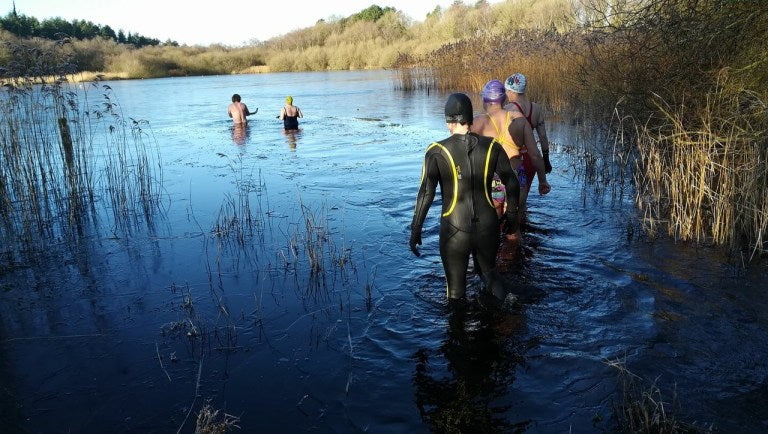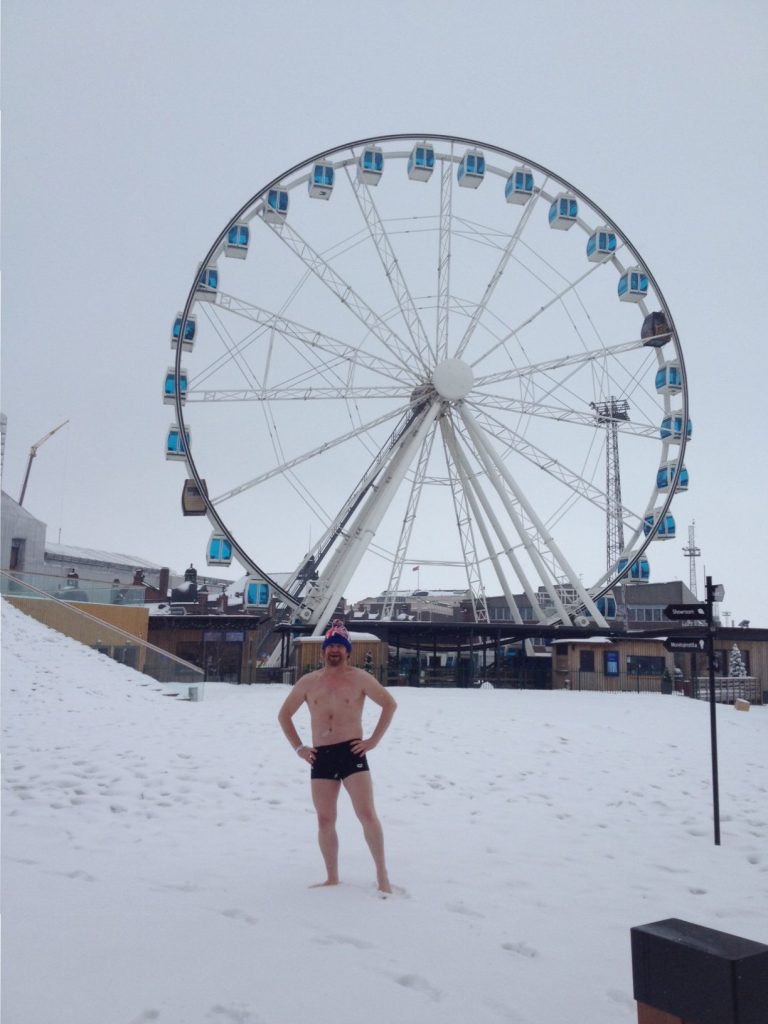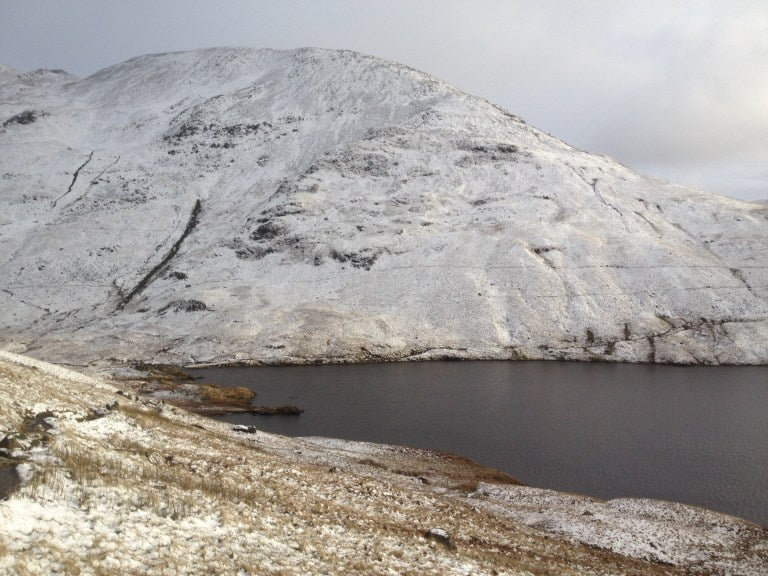Breaking the ice by Matty Davenport
Posted on Thursday, December 05 2019 05:28:00 PM in News by Karen Lee
We had a very hot summer in the UK and I struggled to keep cool in the heat. Going for a swim to cool off became an essential part of the day – morning and evening. Most of my friends were loving the heat and the sunshine, working on their tans when they could, wearing their summer clothes and showing off the beach bodies they’d been working on all winter in the gym. Whilst they opened the freezer door and to reach for the ice cubes for their drink, I used my ice cubes in a very cold bath to keep me ready for the winter swimming season.
Sadly there have been a few deaths this summer from people getting into trouble in ‘cold’ water. One death is one too many, so please check the #respectthewater safety campaign online and follow their ‘float’ advice on what to do if you find yourself suddenly in cold water:
- Fight your instinct to thrash around
- Lean back, extend your arms and legs
- If you need to, gently move them around to help you float
- Float until you can control your breathing
- Only then, call for help or swim to safety if you can
There are many different perceptions of cold, for many people if the water is 10C cooler than the air temperature they will say it is ‘cold’. Cold Water is defined as water between 5-9C by the International Winter Swimming Association (IWSA) who offers open access to world cup and world championship events to swimmers of all abilities from distances of just 25m. Their definition of Ice Water is in the -2C to +2C. Ice Swimming is defined as swimming in water 5C or less by the International Ice Swimming Association (IISA) who offer accreditation for people who take on the ‘ice mile’ or ‘ice kilometre’ challenges. Neither of these organisations allows the use of wetsuits at their events, but that should be no barrier to enjoying all that the water and the winter have to offer, swim in what you are comfortable swimming in.

Tallinn Harbour setting up for the IWSA World Championships
The best way to enjoy cold water swimming is a planned way.
- Plan the entry : where, when, with who, how
- Plan the time : how long to be in the water, how deep to go, how far to swim
- Plan the exit : where your clothes are, which to put on first, how to get warm again
- The last part of the plan is contingency : if things go wrong, how to get help, who will help, what emergency equipment needs to be carried/used
Last winter I was regularly swimming ‘skins’ kilometres, here and there, in water which was colder than most people keep their fridges. Ice swimming is an extreme sport and like most extreme sports needs to be planned for, and like any great adventure, the best planning starts at home. Although there are lots of places people could start, I recommend reading up on a swimmer called Wim Hof who has developed a method for tolerating the cold. Although I don’t fully subscribe to his approach, it’s a good starting point and it includes the three core elements : learning to breathe, developing cold exposure and building confidence.

Helsinki last winter – more freezer than fridge temperature…
Learning to breathe comes first in both the unplanned and the planned entries into the water and is one of the first skills we develop when learning to swim.
Developing cold exposure takes time and patience. A nice, long, warm, hot summer is the perfect time to start. By swimming outdoors twice a week through the summer and into autumn and beyond builds tolerance of cold exposure. If time is limited, using cold showers and later ice baths can work just as well.
When the water is below 16C, I consider having someone with me but below 12C I always make sure I have someone with me. This applies both to indoor and outdoor acclimatisation. Mike, one of the UK swimmers at the Winter Swimming World Championships in Tallinn this year said his preparation had been to train in the pool as normal but in the month leading up to the event he’d been taking ice baths at home and gradually building up the time he spent in there but he was never alone in the house to do this.
Steven Munatones has written a great chapter on ‘Overcoming the Elements’ in his book Open Water Swimming which covers many of the different elements of getting in the cold water:
“During your forays in cold water, think positively and focus on the details of
your stroke and surroundings. Positive thoughts will help you stay focused on
the task at hand and reinforce your commitment to your goals.”
Building confidence is best done by practice. There are lots of differences in how people prefer to get in the water, some prefer the gradual, slower approach, some prefer the quick approach, each have their merits but jumping/diving into freezing cold water can lead to cold water shock so is best avoided.
In winter, I always have at least one person with me in the water or watching from the shore, ideally both. Ice swimming is a very social sport as swimmers are responsible for their own safety but will also look after each other as much as they can. The more friends you can have keeping an eye out for you the better.

Breaking the ice at Hatchmere in February with friends
The other added bonus of having more people around, is there is an increased likelihood that at least one person will have brought cake to share. Cake is an important part of the winter swimming experience as is having warm drinks and friends to share the experience with.
Knowing when to get out is the final part of the cold water swimming planning, which is where the social side of the sport comes into effect. In very cold water, I know I need to rely on the decisions of the people around me to keep me safe. There are no mirrors, so I can’t see my lips turn blue nor can I think straight when I am freezing, so I trust the decisions of my friends to help me. I always use a tow float in case I get into difficulties and I have learnt to put a bright bike light in/on it so the people watching can see me if it’s dark and a whistle so even if people can’t see me they can hear me.
Even in the middle of a very hot summer my priorities getting out of the water are the same as in winter – to get dry and protect myself from the elements.
In winter, time is of the essence, I put something on my feet immediately as the ground is freezing, cover up my upper body first with warm dry layers of clothing, then sort out the swimsuit/wetsuit and drying off underneath a huge warm, waterproof jacket and wear a cosy bobble hat. On remote swims, my method of warming up is having a coffee and a cake then doing a recovery dance as I either walk back to my car or continue my walk in the hills.

Essential : wearing a decent bobble hat!
In parts of the world that experience colder and longer winters than most of the UK, many outdoor swimming venues have saunas and hot tubs right by the water side. These are great for aiding recovery and should be enjoyed slowly as it has taken your body time to cool down, it should be given time to warm up again. One thing to avoid straight after a cold swim is a hot shower, the sudden change in temperature could shock the organs just as much as freezing water can. There is also a thing called after-drop which is where your inner body has not warmed up as much as your outer body and is still suffering the effects of the cold hours after your swim. Once you have warmed up properly, the post-swim buzz is awesome, as is the recovery process. And sharing that positivity with friends is what makes winter my favourite time of year to swim.

Beautiful Grizedale Tarn in Winter – water temperature : 3C
Matthew Davenport, Matty, Instagram – iswim_and_iceswim


